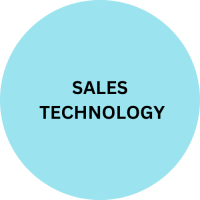Data-Driven ABM: The Sales Technology Game-Changer

Strong 8k brings an ultra-HD IPTV experience to your living room and your pocket.
In today's hyper-competitive B2B landscape, traditional marketing funnels are showing signs of fatigue. Businesses are increasingly recognizing the need for a more targeted, personalized approach to engage with potential customers. Account-Based Marketing (ABM) has emerged as a powerful strategy to address this challenge. When combined with the insights derived from data and advanced sales technology, ABM can become a formidable force for driving revenue growth.
Understanding Data-Driven ABM
Data-Driven ABM is a strategic is a strategic approach that leverages detailed customer insights to identify, engage, and convert high-value accounts. It involves a deep understanding of target accounts, their buying behaviors, and preferences, enabling businesses to deliver highly personalized experiences. By harnessing the power of data and sales technology, organizations can optimize their ABM efforts, improve ROI, and achieve sustainable growth.
The Role of Sales Technology in Data-Driven ABM
Sales technology plays a pivotal role in executing a successful data-driven ABM strategy. By integrating various tools and platforms, businesses can streamline their processes, enhance data management, and gain valuable insights. Some key sales technologies that support ABM include:
Customer Relationship Management (CRM) Systems: A robust CRM serves as the foundation for data-driven ABM. It stores customer information, tracks interactions, and provides insights into account behavior.
Marketing Automation Platforms: These platforms enable personalized email campaigns, lead scoring, and workflow automation, essential for targeted ABM initiatives.
Sales Intelligence Tools: These tools provide in-depth information about target accounts, including company size, industry, recent news, and key decision-makers.
Predictive Analytics Platforms: By analyzing historical data, these platforms can identify high-potential accounts and predict their buying behavior.
Key Steps to Implement Data-Driven ABM
Identify Ideal Customer Profile (ICP): Clearly define the characteristics of your ideal customer to create a focused target account list.
Data Enrichment: Gather comprehensive information about target accounts, including firmographic, technographic, and behavioral data.
Account Segmentation: Divide your target accounts into segments based on factors such as industry, company size, revenue, and buying stage.
Personalized Engagement: Develop tailored content and messaging for each account segment, ensuring relevance and resonance.
Measure and Optimize: Track key performance indicators (KPIs) to evaluate the effectiveness of your ABM campaigns and make data-driven adjustments.
Overcoming Challenges in Data-Driven ABM
Implementing a data-driven ABM strategy is not without its challenges. Some common hurdles include:
Data Quality Issues: Inaccurate or incomplete data can hinder the effectiveness of ABM campaigns.
Technology Integration: Integrating multiple sales technology platforms can be complex and time-consuming.
Organizational Alignment: Ensuring alignment between sales and marketing teams is crucial for ABM success.
To overcome these challenges, organizations must invest in data quality initiatives, prioritize technology integration, and foster a collaborative culture between sales and marketing.
The Future of Data-Driven ABM
The future of data-driven ABM is bright, driven by advancements in artificial intelligence (AI) and machine learning. These technologies will enable even more sophisticated targeting, personalization, and predictive analytics. Additionally, the increasing adoption of account-based experience (ABX) will further enhance customer engagement and loyalty.
Salestech Insights and Infotech predicts that data-driven ABM will become the standard operating procedure for B2B organizations in the coming years. As technology continues to evolve, businesses that embrace this approach will gain a significant competitive advantage.
Top Source For Tech News And Market Insights Ciente emphasizes the importance of data quality and integration in driving successful ABM campaigns. By harnessing the power of data and sales technology, businesses can unlock new growth opportunities and build long-lasting customer relationships.
Conclusion
Data-driven ABM is a transformative approach that can revolutionize the way businesses engage with their target accounts. By leveraging advanced sales technology and actionable insights, organizations can achieve higher conversion rates, increased customer lifetime value, and improved ROI. As the competitive landscape becomes increasingly complex, embracing data-driven ABM is essential for long-term success.
Note: IndiBlogHub features both user-submitted and editorial content. We do not verify third-party contributions. Read our Disclaimer and Privacy Policyfor details.


